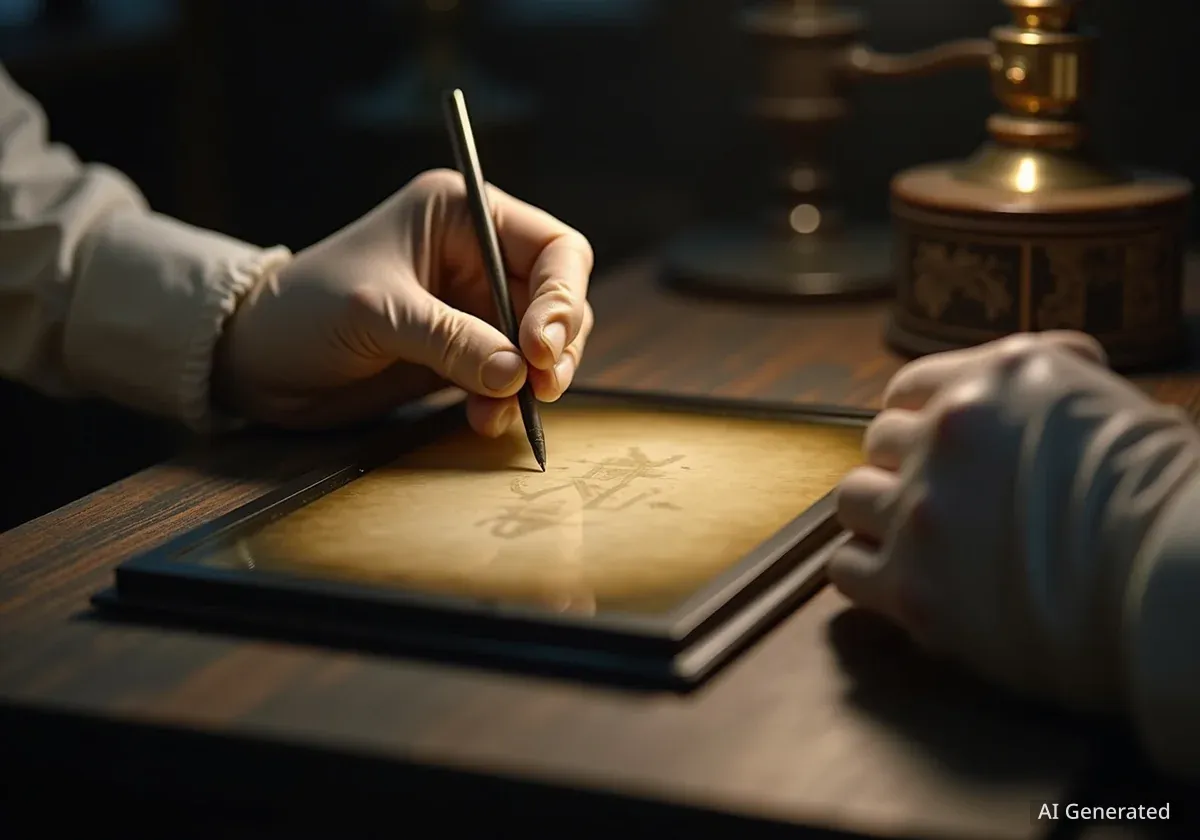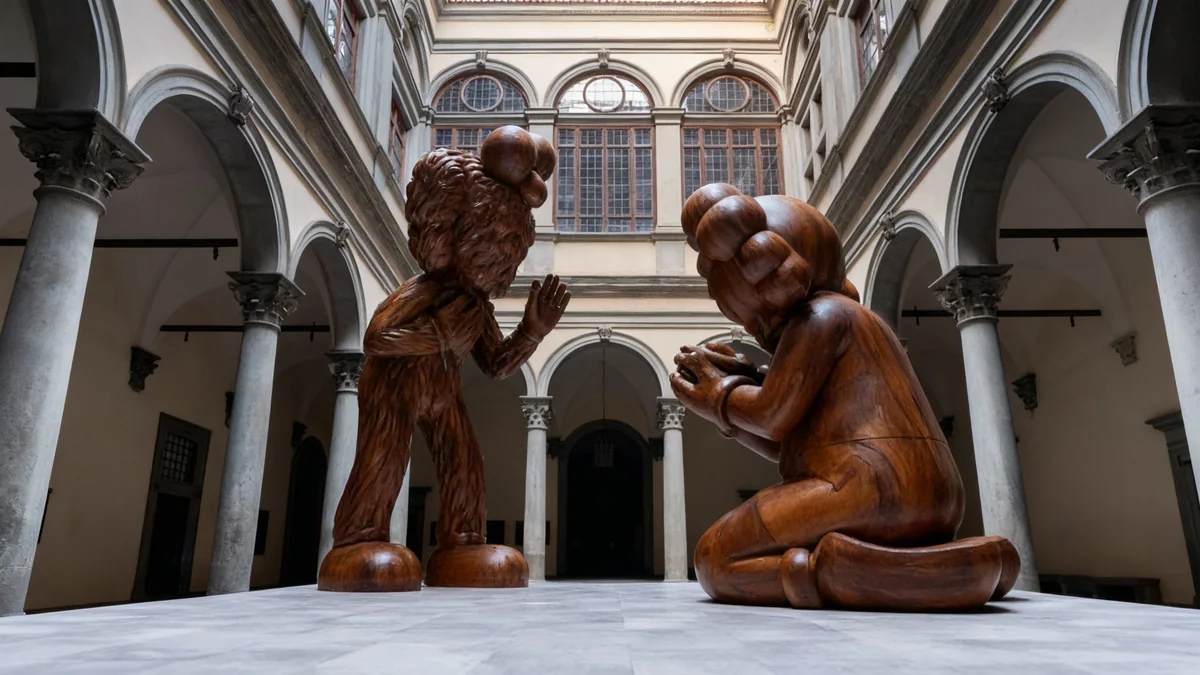Photographers in the 19th century used specialized equipment, like antique retouching desks, to modify images long before digital software existed. These devices allowed for manual adjustments to negatives, a process similar in intent to modern digital retouching. Photographer Markus Hofstätter recently demonstrated this historical technique using a well-preserved desk from the late 1800s.
Key Takeaways
- Image retouching predates digital photography by over a century.
- Antique retouching desks provided a physical method for editing negatives.
- Markus Hofstätter used a 19th-century desk to manually correct a wet plate negative.
- The process involved reflected light, tracing paper, and manual drawing.
- This historical approach prevented permanent damage to original negatives.
The Origins of Photo Manipulation
The concept of altering photographs is nearly as old as photography itself. While many people today associate image editing with software like Photoshop, photographers have been manipulating images for well over a century. Early 20th-century photographers, including renowned figures like Ansel Adams, were recognized for their advanced darkroom skills. These skills involved intricate processes to achieve desired visual effects in their final prints.
Even iconic images from agencies like Magnum Photos underwent darkroom adjustments. This historical context highlights that the desire to perfect or enhance an image is a fundamental part of photographic art, regardless of the technology available. The tools have changed, but the goal remains similar.
"I often hear about the 'good old days' when there was no Photoshop and retouching," Hofstätter states in his video. "If somebody tells you that, you may show them this video."
Understanding the Antique Retouching Desk
Markus Hofstätter explored this historical practice using an antique retouching desk. This specific desk dates back to the late 19th and early 20th centuries. Its excellent condition in 2025 indicates robust construction and careful preservation. The device features multiple parts, including tilting arms and various adjustment mechanisms designed for precision work.
The core function of the desk involves light manipulation. An adjustable mirror positioned beneath the desk reflects light upwards. This light passes through the back of a glass plate negative, which rests on the desk's top surface. This setup allows the photographer to clearly see the details of the negative through transmitted light.
Fact: Early Retouching Tools
Before digital tools, photographers used pencils, brushes, dyes, and even knives to physically alter negatives and prints. These techniques required significant skill and patience.
Hofstätter's Retouching Process
Hofstätter used the antique desk to retouch a wet plate negative from his "Emily Portraits of Hope" series. This series is known for its impactful imagery. For his retouching demonstration, he focused on a portrait that showed a developer burn and some blemishes on the subject's skin. His goal was to correct these imperfections without permanently altering the original negative.
To achieve this, Hofstätter placed tracing paper directly on top of the glass plate negative. The light reflected from below illuminated the image through the tracing paper. This method allowed him to draw and blend with a pencil on the tracing paper, effectively making non-permanent changes. He worked to smooth out the burn and reduce the appearance of blemishes, blending the pencil marks with the existing tones of the negative.
From Negative to Final Print
Despite this being his first attempt at using this specific antique retouching technique, Hofstätter demonstrated considerable skill. After completing the pencil work on the tracing paper, the next step involved creating a positive print. This required a traditional photographic process. Hofstätter prepared photo paper using a salt solution and silver nitrate, then placed it in a copy frame with the retouched negative.
Historical Context: Wet Plate Collodion Process
The wet plate collodion process, popular in the mid-19th century, involved coating a glass plate with a collodion solution containing light-sensitive silver salts. The plate had to be exposed and developed while still wet, a challenging and time-sensitive process.
The assembly was then exposed to sunlight, allowing the image to transfer to the photo paper. Following exposure, Hofstätter washed, toned, and fixed the print. The final retouched print showed noticeable improvements, appearing refined and polished. While he acknowledged room for improvement in his technique, the project offered a compelling look into the historical methods of photo manipulation.
The Enduring Need for Image Enhancement
The journey from 19th-century retouching desks to modern digital software like Photoshop reveals a continuous human desire to refine visual narratives. Early photographers faced technical limitations and sought ways to correct flaws or enhance artistic expression. The antique retouching desk represents an ingenious solution from an era without electronics, providing a physical workspace for meticulous manual adjustments.
This historical perspective challenges the notion that image manipulation is a recent phenomenon. Instead, it underscores that the pursuit of a perfect or desired image has always been central to photography. The tools have evolved dramatically, becoming faster and more versatile, but the underlying motivation remains consistent across centuries of photographic practice.
Statistic: Photo Editing Software Market
The global photo editing software market was valued at approximately $937 million USD in 2022 and is projected to grow significantly, reaching over $1.5 billion USD by 2030, according to recent market analysis. This growth highlights the ongoing demand for image manipulation tools.
Hofstätter's project serves as a valuable educational piece, demonstrating the ingenuity of early photographers. It connects the past and present of image creation, showing that the core principles of photographic enhancement have a rich and detailed history.




